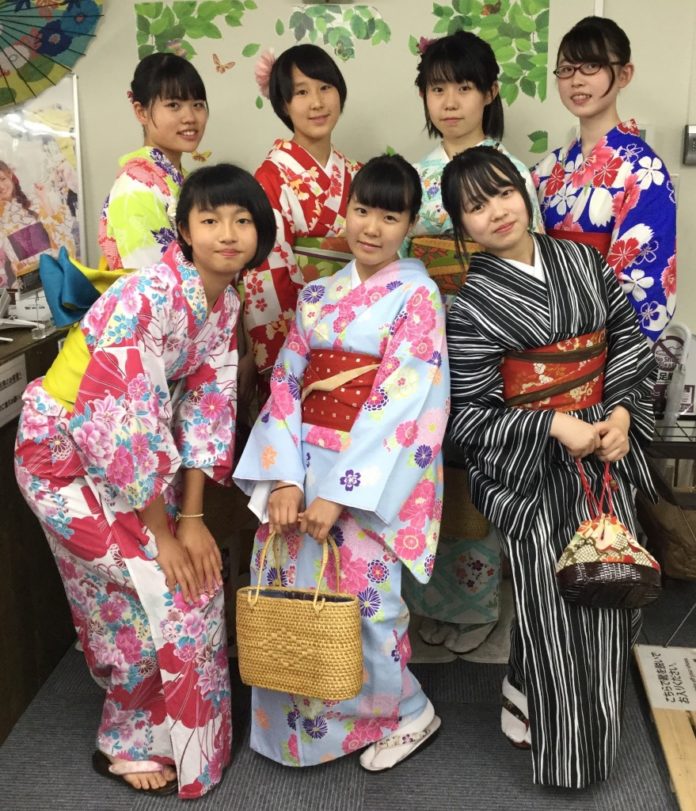
Kimono history
Kimono refers to traditional Japanese costumes that are internationally accepted as KIMONO, but the original meaning was literally “kimono”, a word that describes clothing in general…
In the old days, the clothes they wear on a daily basis were called kimonos.
In addition, it is said that the kimono of its current form has not been used since the beginning of the Heian period.
Until then, the mainstream was a combination of trousers and skirts with a top, and one-piece type clothing.
From the Heian period, so-called current kimonos, which are made by cutting and sewing fabrics in a straight line, have come to be made regardless of the wearer’s body shape.
This method is called “straight cutting” and has the advantage that the fabric can be used without waste and can be easily folded.
In addition, many types of kimonos have been made and developed by incorporating various applications and ingenuity, such as layering when it is cold and using cool materials when it is hot.
History of Yukata
Yukata is said to have its origins in the Heian period, which is the shape of today’s kimono.
It all started when people at that time wore a kimono made of hemp, “Yukatabira,” to prevent burns from steam when they used to take a steam bath.
With the passage of time, Yuchoko is well-ventilated and absorbs sweat well, so it will change to be worn after bathing, playing the role of a towel or bathrobe today.
The name is gradually abbreviated as “Yukata” from Yukatako.
In the Edo period, yukata was worn as outing wear from the fashion for bathing, and the yukata, which is easy to wear, has become established as a summer everyday wear.
Yukata has a strong image of being worn at summer events such as festivals and fireworks displays.
Nowadays, the number of types of yukata is increasing, and reasonably priced ones and obi that can be easily tied are also appearing, so it is easier to adopt than before.
Even if you don’t know much about yukata, you can understand that it is kimono. It’s similar to a kimono, but what’s the difference? Introducing the difference between yukata and kimono.
Is yukata actually a kind of kimono?
If you wear a yukata in Japanese, you can think of it as a kimono.
But the way of dressing and the situations are different.
If you divide clothing into categories, if you divide it into rough categories, yukata is a kind of kimono.
If you categorize it further, you can see some differences. Let’s take a look at the small differences, assuming that yukata is a type of kimono.
- Yukata is a thin kimono to wear in the summer
- Yukata is considered to be a type of kimono, but there are some differences from kimono.
- The most obvious difference is that “Yukata is a thin kimono to wear in the summer”.
- Kimono and yukata have almost the same shape.
However, if you compare the two side by side, you can clearly see the difference in the fabric. The kimono is a little thick and solid fabric, and it does not show through.
On the other hand, the yukata is soft and light even when worn with a silky feel, and has a sense of sheerness.
Some fabrics are not transparent, but they are transparent when exposed to light, so even if there are differences in the fabric, they are thinner than kimono.
- Yukata is worn in the summer, so it’s best to see through.
- It’s also breathable, so you can wear it cool even in the hot summer.
If it’s hard to imagine when it comes to kimono, it may be easier to understand if you replace it with clothes.





